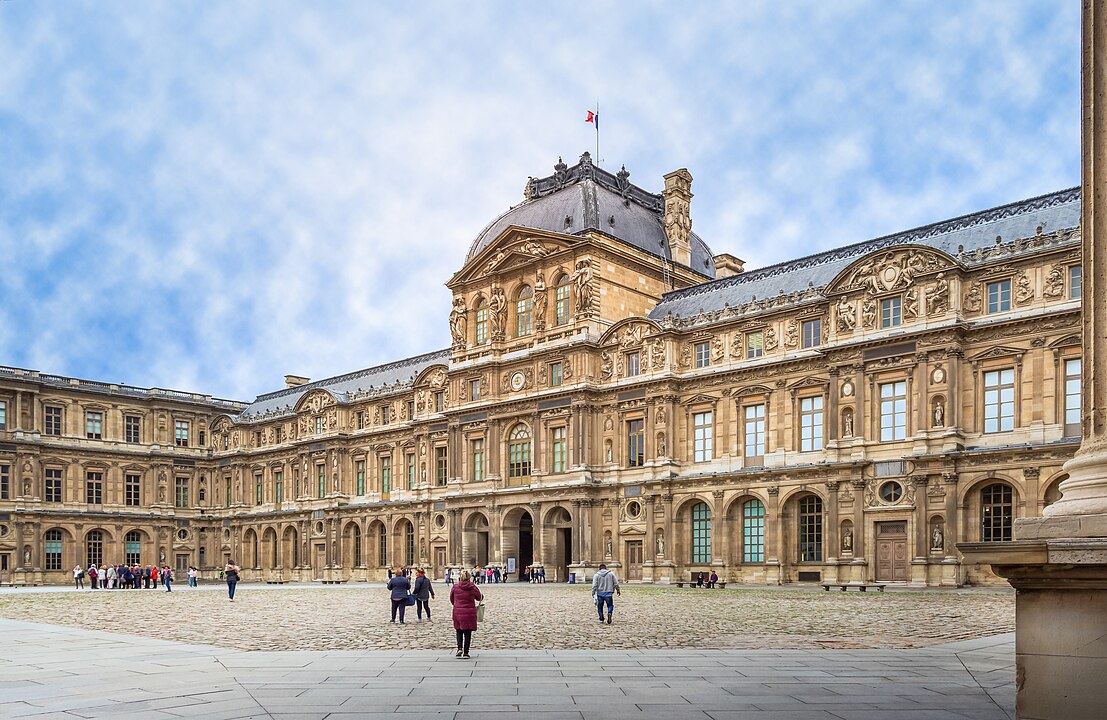
How much is Louvre Palace worth?
A comprehensive discussion and exploration of the Louvre Palace, exposing rich history, cultural significance, and attempts to evaluate its worth.
The Louvre Palace History and Culture
The Louvre Palace, or Palais du Louvre, is an architectural masterpiece and one of the world’s most renowned cultural landmarks. Located in the heart of Paris, France, the Louvre is not merely a museum but a historic site that embodies centuries of French history, art, and culture. The evolution of the Louvre from a medieval fortress to a royal palace and eventually to the most visited museum in the world is a story of adaptation, grandeur, and cultural preservation.
1. Historical Evolution
A Fortress Born in the 12th Century
The Louvre began as a fortress constructed under the reign of King Philippe Auguste in the late 12th century. It was built to protect Paris from Viking invasions and served as a strategic military bastion. The original structure, with its moats, high walls, and imposing towers, symbolized defense and power. While much of the medieval fortress is no longer visible, remnants like the foundation and dungeon remain, accessible in the museum’s basement, offering visitors a glimpse into its origins.
Transformation into a Royal Palace
In the 16th century, King François I initiated the transformation of the fortress into a royal palace, reflecting the Renaissance style. Under his reign, the Louvre began its association with art, as François I was a patron of the arts and acquired numerous works, including Leonardo da Vinci’s Mona Lisa. Successive monarchs, including Louis XIII and Louis XIV, expanded the Louvre, adding grandeur through ornate architecture and magnificent halls.
Abandonment as a Royal Residence
By the late 17th century, Louis XIV moved the royal court to Versailles, leaving the Louvre primarily as a residence for artists and intellectuals. The idea of turning the Louvre into a public museum began to take shape during this period.
The Birth of the Louvre Museum
The French Revolution in 1789 marked a turning point for the Louvre. In 1793, the palace officially opened as the Muséum Central des Arts de la République, displaying over 500 pieces of art, many confiscated from the church and nobility. Over the centuries, the museum’s collection grew through acquisitions, donations, and expansions, cementing its status as a global cultural hub.
2. Architectural Marvel
The Louvre Palace spans over 800,000 square feet, making it one of the largest palaces in the world. It comprises several wings, courtyards, and buildings, blending different architectural styles from Gothic and Renaissance to Baroque and Neoclassical.
One of its most iconic features is the Pyramid of the Louvre, designed by Chinese-American architect I. M. Pei and inaugurated in 1989. The pyramid serves as the museum’s main entrance and symbolizes the harmonious blend of historical and modern elements.
3. Cultural Significance
The Louvre Palace is more than a physical structure; it is a repository of human history and creativity. Housing over 35,000 works of art, it attracts millions of visitors annually. Its collections span ancient civilizations, including Mesopotamian, Egyptian, and Greek artifacts, as well as masterpieces from the Renaissance and beyond. The Louvre’s most famous residents include:
- Mona Lisa by Leonardo da Vinci
- The Venus de Milo
- The Winged Victory of Samothrace
- Works by Titian, Vermeer, and Delacroix
The palace itself tells stories of French kings, emperors, and cultural movements, offering visitors a journey through time.
How Much Is the Louvre Palace Worth?
Valuing a structure like the Louvre Palace is a complex exercise, involving both tangible and intangible aspects. The palace is not merely a piece of real estate but a priceless cultural artifact. Here’s how its worth can be considered:
1. Architectural and Real Estate Value
The Louvre Palace spans an enormous area in one of the most expensive cities in the world. Parisian real estate prices in the central arrondissements can exceed €20,000 per square meter. Using this rate as a baseline, the real estate value of the palace alone would be astronomical, potentially in the range of billions of euros. However, this calculation does not account for its unique historical and architectural value, which far surpasses standard real estate metrics.
2. Art Collection Value
The Louvre’s collection includes some of the most valuable artworks in history.
- Leonardo da Vinci’s Mona Lisa, often considered priceless, has been valued at over $1 billion based on its cultural impact and historical significance.
- The combined value of the museum’s 35,000 artifacts and artworks could easily exceed tens of billions of dollars, making it one of the most valuable collections globally.
3. Cultural and Historical Value
The true worth of the Louvre Palace transcends monetary calculations. Its historical importance, cultural significance, and role as a global symbol of art and heritage make it invaluable. No amount of money can replace its contribution to world culture.
4. Tourism Revenue
The Louvre is the most visited museum in the world, with over 7 million annual visitors (pre-pandemic figures).
- Entry fees, gift shop sales, and associated tourism activities generate substantial revenue.
- This economic impact extends beyond the museum itself, boosting Paris’s economy through tourism, hospitality, and transportation sectors.
5. Symbolic Value
The Louvre Palace is a symbol of French identity and cultural pride. Its worth cannot be quantified solely in financial terms. It represents centuries of artistic achievement and serves as a bridge between the past and the present.
The Louvre in Modern Times
In the 21st century, the Louvre Palace continues to adapt to the needs of modern audiences while preserving its historical essence. The museum embraces technology, offering virtual tours and digital access to its collections. The expansion of the Louvre brand, including the Louvre Abu Dhabi in the UAE, extends its global reach and influence.
Despite its timeless allure, the Louvre faces challenges, including the preservation of its artifacts and balancing accessibility with conservation. However, its enduring appeal ensures it remains a cornerstone of global cultural heritage.
The Louvre Palace is a treasure trove of history, architecture, and art, encapsulating the spirit of human creativity and resilience. While its monetary worth is staggering, its true value lies in its ability to inspire, educate, and connect people across generations and cultures. The Louvre is not merely a building or a museum, it is a legacy, a symbol, and a testament to the enduring power of art and history.




